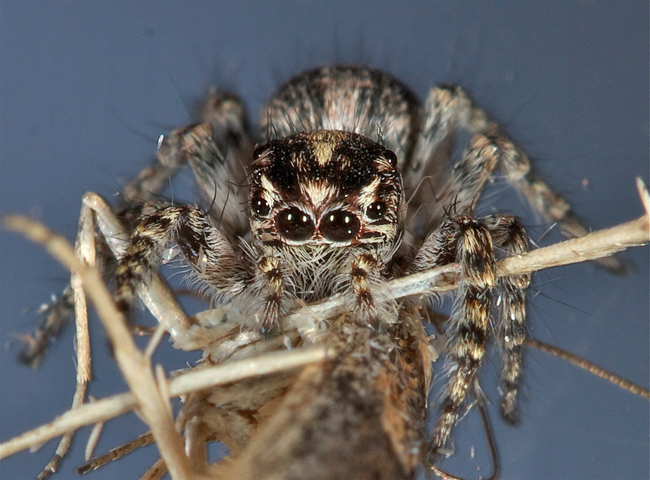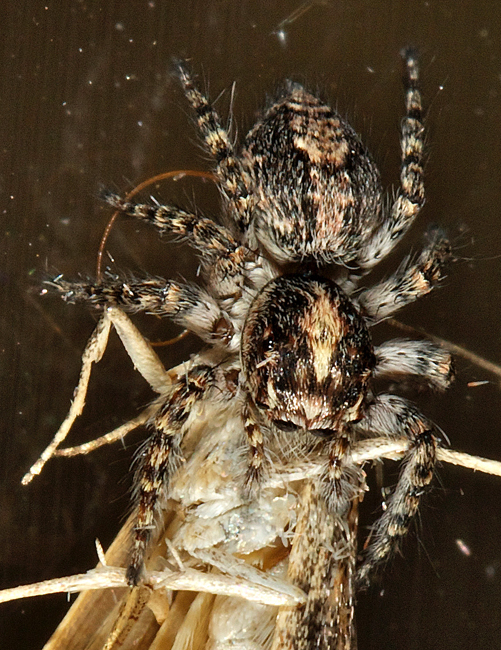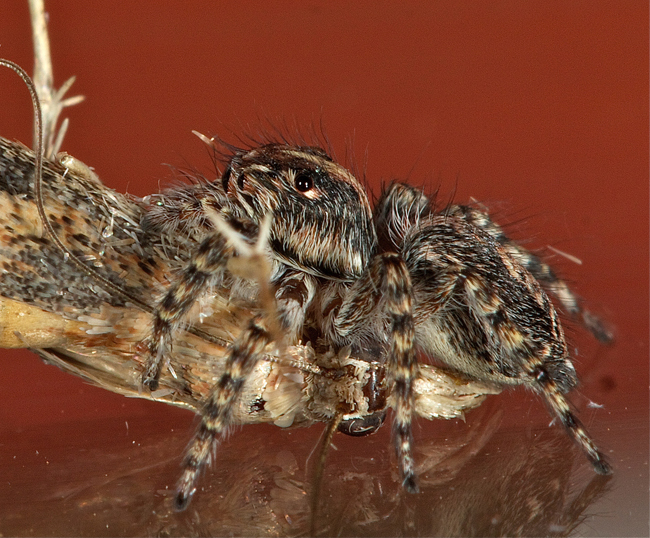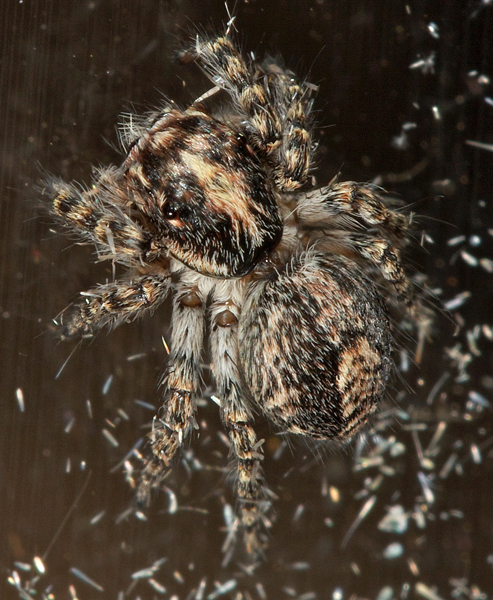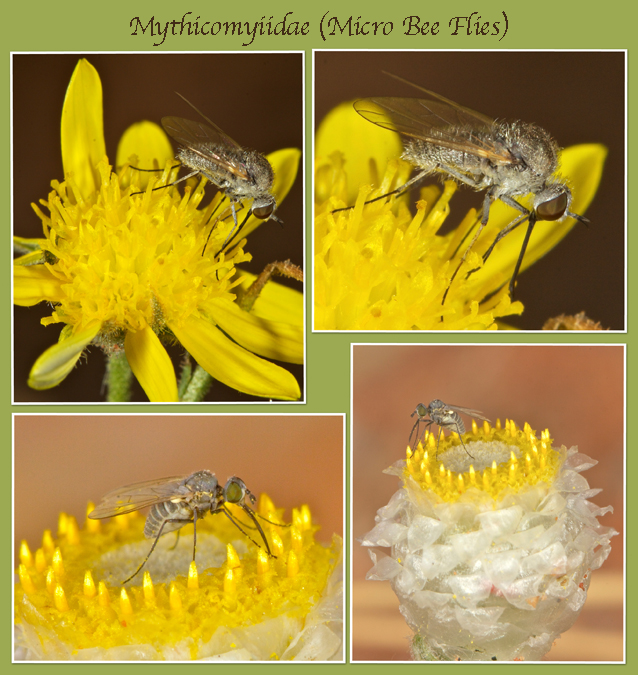Insect or Invertebrates Identification - DONE
Moderator: Klipspringer
-
Klipspringer
- Global Moderator
- Posts: 5858
- Joined: Sat Sep 14, 2013 12:34 pm
- Country: Germany
- Contact:
Re: Jumping Spider IDs and Comments
If it is the same location (camp) it's probably the same spider species, these guys don't like eachother  and for me they look the same!
and for me they look the same!
Re: Jumping Spider IDs and Comments
-
Klipspringer
- Global Moderator
- Posts: 5858
- Joined: Sat Sep 14, 2013 12:34 pm
- Country: Germany
- Contact:
Re: Jumping Spider IDs and Comments
File 10 and file 17 are also Menemerus sp., you can post them, too (but seperate entries) and then we are done with Menemerus 



My most recent piece of wisdom:
Only the males have the white stripe on the pedipalps. Females have all-over cream pedipalps.
My most recent piece of wisdom:
Only the males have the white stripe on the pedipalps. Females have all-over cream pedipalps.
-
Klipspringer
- Global Moderator
- Posts: 5858
- Joined: Sat Sep 14, 2013 12:34 pm
- Country: Germany
- Contact:
Re: Jumping Spider IDs and Comments
Now we do this highlightExFmem wrote: ↑Sun May 03, 2020 7:21 pm I only have one more to post

2018 KTP Sept/oct
It resembles this one of Vida’s, somewhat. Unfortunately it’s labeled Unidentified sp.
Also one she has as Hyllus sp., and Icius insolidus have similarities.
Bye my little jumping spider buddies. Until we meet again
![In Love [InLuv]](./images/smilies/icon_liebhab.gif)
Pignus sp. female
The pattern on the adomen resembles this P. simoni


And in the Ndumo paper there are some parts of the description matching (note: so far only males treated)
Pignus pongola:
medium-sized spider. Carapace oval, dark
brown, with broad white streaks composed of light hairs along lateral margins; lighter
spot in foveal area; reddish scales cover anterior part of eye field and form small patches
in front of posterior lateral eyes; some brown bristles on eye field; clypeus very low,
with some white hairs; below anterior lateral eyes, on ‘cheeks’, two parallel thin lines.
Endites and labium brown with yellow tips; sternum orange; chelicerae very large,
longer than in congeners, with long fang; promargin with two teeth, retromargin with
single large tooth placed close to base of fang (Fig. 148); chelicerae dark brown with
metallic lustre. Abdomen oval, brownish grey with irregular lighter band medially;
sparse long bristles on abdominal dorsum; venter dark, with four lines composed of
light dots; spinnerets light brown. Legs brown, but coxae orange; femora darker than
remaining segments; leg hairs dense, dark brown, among them some whitish ones.
Pedipalps small, brownish, clothed in long hairs; tibial apophysis narrow and long,
tegulum with large semicircular lobe at base of embolus, embolus long
This photo from 2013 labelled as P. simoni female
The two-striped cheek is the give away for the Pignus, let's make it a Pignus sp.
https://bioone.org/journals/african-inv ... .0105.full
https://www.researchgate.net/publicatio ... a/download
Pignus pongola female
-
Klipspringer
- Global Moderator
- Posts: 5858
- Joined: Sat Sep 14, 2013 12:34 pm
- Country: Germany
- Contact:
Re: Insect or Invertebrates Identification
These flies don't have the right label 
We can post it as an Apolysis sp.
I am still thinking what the other one could be
Compare (from Afro Diptera Manual)
We can post it as an Apolysis sp.
I am still thinking what the other one could be
-
Klipspringer
- Global Moderator
- Posts: 5858
- Joined: Sat Sep 14, 2013 12:34 pm
- Country: Germany
- Contact:
Re: Insect or Invertebrates Identification
Re: Anthidium or Afranthidium sp. (wool carder bee) - I'm to enter it as highlighted, correct?
Re: Insect or Invertebrates Identification
Are the previous entries in the AW book for Mythicomyiidae correct? 



